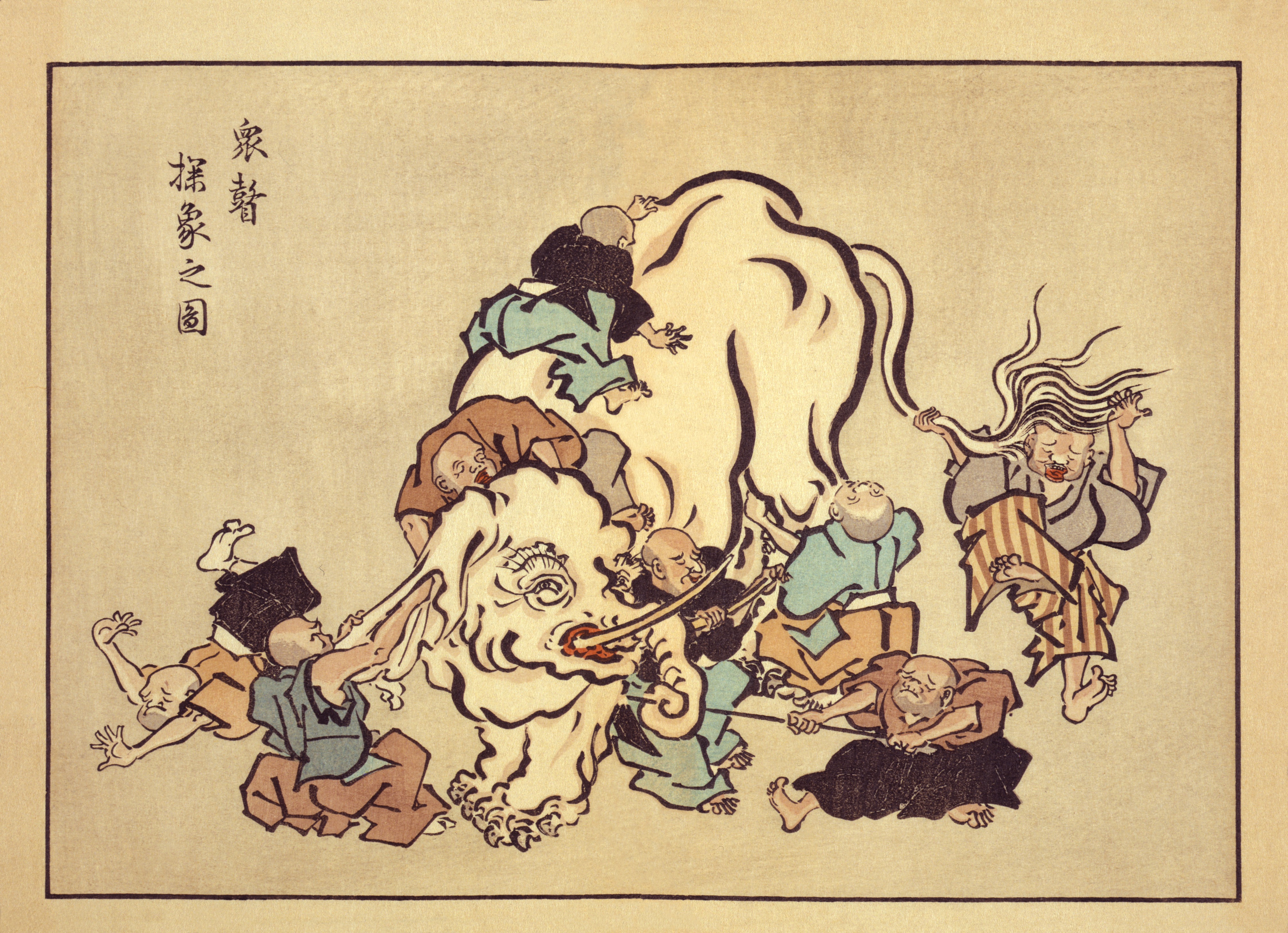My Digital Storytelling class was asked to try to define “digital storytelling.” Below is my reply.
It seems to me like we’ve got one of those blind-men-and-an-elephant problems, here. I’ve been playing around with trying to come up with a working definition of “digital storytelling” for a couple days, now, and honestly, anything I can come up with is simultaneously:
- So broad as to be meaningless.
- Still far too restrictive.
This does not bode well for the prospect of coming up with anything that even resembles a “definitive answer” to the question of what “digital storytelling” is.
Which makes this class seem a bit amorphous.
The best I can come with is this: “Digital storytelling” is the use of digital (non-analog, usually computer-based) media to create (or suggest) a narrative (or set of narratives or narrative possibilities).
I could unpack that a little, but I’m afraid to do so too much, because the more you do, the more restrictive your definition becomes. So let me just sort of ramble about a couple of the implications of this.
The use of digital techniques alters older technologies by lowering barriers to use in both cost and necessity of technical skill. While techniques like sophisticated 3-d rendering are still prohibitively difficult for amateur users, digital photography, videography, sound recording, and image alteration have continued to get cheaper, faster, and easier. Looking at a the technological forces behind this, things like Moore’s Law, Rock’s Law, and Nielson’s Law all suggest that this pattern will continue. All things digital will continue to get faster, cheaper, easier, and better, as long as research and development continue.
Not only is this true with individual digitized media, but it is also true of the ability of computers to integrate various forms of media into a coherent whole. Digital technology continues to make it easier, faster, and cheaper to put together still and moving images, sounds, and written words, to combine them into new integrated wholes.
And just like the words and pictures of a comic strip, each of these elements gains something in combination with other elements– it’s a synergistic relationship. Looking at just the words or just the images of your average comic strip, you realize that either element is less meaningful when not interacting with the other. The whole is more than the sum of the parts. It’s the same thing with digital stories that incorporate multiple media.
While words, pictures, sound, and video are all clearly important building blocks for digital stories, it is important not to exclude the “natively digital” media that can be incorporated into digital storytelling projects– the two that spring immediately to mind are simulation and databases.
Both of these technologies present us with some of the most dramatic possibilities of digital storytelling: they do not necessarily follow– and indeed can be used to actively undermine– the traditional notions of narrativity we have from old media. Storytelling is no longer necessarily limited to a single beginning, middle, and end. Instead, creators have the ability to chart various paths that audiences can take, indeed– audiences are no longer limited to “passive” intake, but can actively guide their own user experience, taking the driver’s seat or even helping to build and extend the story itself.
Of course, audiences have never been particularly passive, and have always re-purposed, remixed, and reinterpreted the media they consume. The difference now is that we can construct stories that encourage or even force audiences to do just that. It can be built into the medium itself, now, rather than just being built into how humans consume stories.
